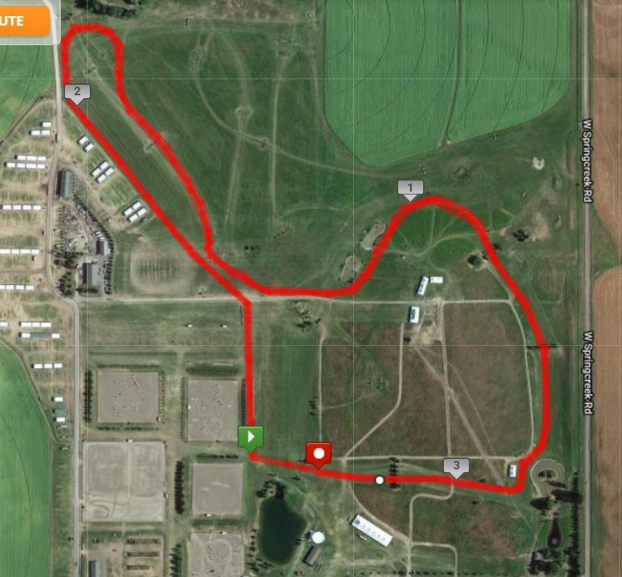Recently, Sentinel’s varsity cross country team made its way to the state competition. The team’s season has been in full swing for a while and this was the final event to close out their season until next year.
Two members of the team, Harley Pohl Smith and Aeryn McCallie, provided a rundown of exactly how the event takes place. This includes individual routines, group activities, and the rules of the race itself.
The event was an away game taking place in Kalispell. Out of the fourteen students who make up the co-ed team, seven girls and seven boys from varsity are allowed to run for the state competition.
Upon arriving a few hours before the competition starts, the team will find a place to set up their tent. The members will go around and make sure that everyone has water, snacks, and whatever else they may need during the long day.
Some team members have specific things they will do as a kind of ritual before a race in order to mentally prepare themselves for the rush of adrenaline and nerves. McCallie says that a fellow runner will listen to “heavy metal and angry rap” before every race.
When questioned why they do this the player responded saying that they just “want someone to yell” at them. For another teammate this preparation consists of “eating an entire quarter bag of goldfish and then seeing if anyone else wants goldfish.”
Pohl Smith and McCallie, having both experienced these behaviors for a while, cheerfully brush them off, agreeing that “everybody copes with the stress [of the race] in their own way.”
When it comes to physically preparing for the event, the team has developed a specific group routine.
“Forty-five minutes before people will go on [like] a ten to twenty minute warm up run.” These will be done individually just to get their bodies used to moving before they collectively warm up for the race.
McCallie adds that after this warm-up run the team will do activations. Muscle activating is when athletes will exercise specific muscles that will be excessively used during an event or practice. After this they will stretch before lining up at the starting line, “ten minutes before the race actually starts.” Making sure to keep themselves warm as they line up.
At the end of day it was revealed that the boys team did manage to place scoring 6th for the school thanks to team members Quinn Newman who placed 5th and Tyler Inabnit for 16th.
Although the girls team unfortunately did not place, the team did, however, show a great deal of progress throughout this season. Pohl Smith explained that the reason for their lack of placement has a lot to do with the scoring system of the game.
“A lot of the scoring points in cross country is strength in numbers,” McCallie explains. The more girls that cross the finish line the more points the team will score in total.
McCallie and Pohl Smith admit that because of the current size of the team it would be difficult for them to place. This is why the team is very eager to collect more members for the next season.
Cross country is what is referred to as a “no cut” sport. If you come to one practice and decide you want to join you can do so immediately if you so choose. It is, unfortunately, also somewhat notorious among high schools for being unenjoyable and difficult to get people to have any sort of interest in. Some of this could be due to the injuries commonly associated with the sport.
Every sport runs the risk of injury. The most common injuries that come with cross country are sprains – usually in the ankles or knees – and strains in the muscle.
McCallie says that during her time the injuries she has witnessed the most often would be muscle strains. These will typically not take too long to recover from and can be fully healed as they are not a severe injury.
On the other hand, the worst injury with the longest recovery time she has personally witnessed, would be stress fractures. Stress fractures are common, especially for runners, and they occur when a specific point of the body is put under continuous strain.
Tiny fractures appear in the bone and if they go untreated there is the possibility that they could dramatically worsen over time. This is not likely to happen, however, because the Sentinel team avoids this happening by taking the player out of the season so they can have a full recovery before they return.
The team also put the rumors of constant vomiting during practice to rest.
Pohl Smith states that this is only known to happen during summer months “on really hot days.” She says it also has to do with the specific person’s levels of hydration, nutrition, and sleep. If the person is not properly caring for themselves then the chance of that happening is much higher.
For the few times this does happen the team makes sure their teammate is properly hydrated and treated as they need to be before they are allowed to continue with practice.
This care for the team and its members is carried by all who participate in the sport. Pohl Smith even says that her favorite part of cross country is how much the sport requires the team to build relationships with one another, partially due to its small stature.
“It’s definitely a hard sport, so all the workouts have brought us together. Because it’s very difficult and we’[are] all just bringing each other up.”
It is no secret that cross country is a difficult sport. Despite the time, dedication, and overall exertion the experience requires, all those who participate are endlessly supportive of one another as they go through the process as a team.
Cross country is no walk in the park, but no matter if they win every competition or not, they will never stop supporting each other and making sure they cross that finish line together.









